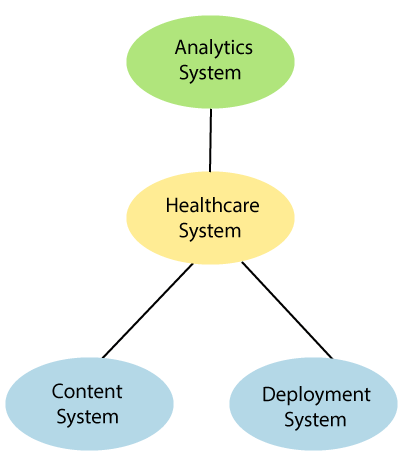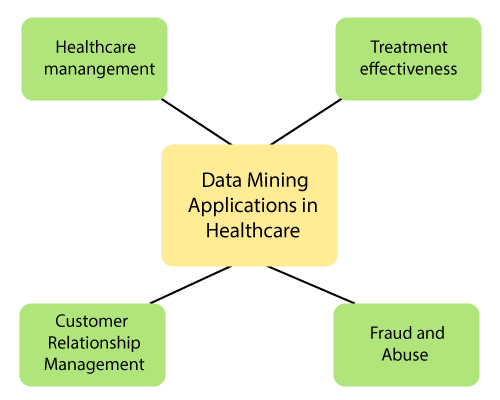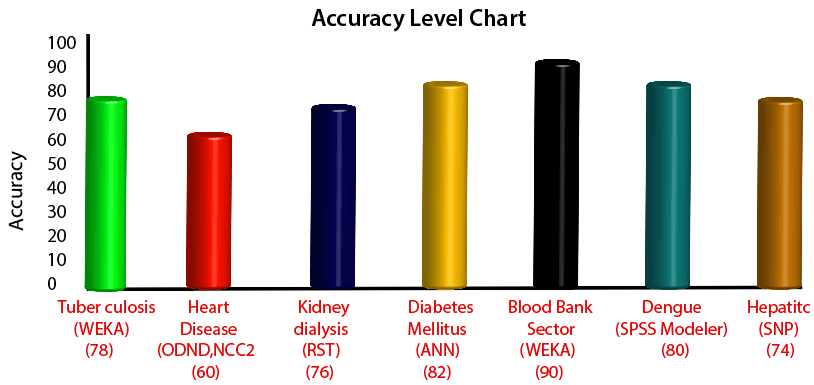Data Mining in HealthcareVarious sectors effectively use data mining. It enables the retail sectors to display customer response and helps the banking sector to predict customer profitability. It serves many similar sectors such as manufacturing, telecom, healthcare, automotive industry, education, and many more. Data mining holds incredible potential for healthcare services due to the exponential growth in the number of electronic health records. Previously Doctors and physicians hold patient information in the paper where the data was quite difficult to hold. Digitalization and innovation of new techniques reduce human efforts and make data easily assessable. For example, the computer keeps a massive amount of patient data with accuracy, and it improves the quality of the whole data management system. Still, the major challenge is what should healthcare services providers do to filter all the data efficiently? This is the place where data mining has proven to be extremely useful. Scholars are utilizing different approaches like clusters, classification, decision trees, neural networks, and time series to publish research. However, Healthcare has consistently been slow to incorporate the latest research into everyday practice. A different approach to mine the data in healthcare:The best procedure for taking data mining beyond the rule of academic research is the three system approach. Implementing all three systems is the way to drive a real-world improvement with any analytics initiative in healthcare. Unfortunately, very few healthcare organizations execute all three of these systems. These are the following three systems:
The analytics system:The analytics system incorporates the technology and expertise to accumulate information, comprehend it, and standardize measurements. Aggregating clinical, patient satisfaction, financial, and other data into an enterprise data warehouse (EDW) is the foundation of the system. The content system:The content system includes standardizing knowledge work. It applies evidence-based best practices to care delivery. Scientists make significant discoveries each year about clinical best practice, but it mentioned previously, it takes a long time for these discoveries to be incorporated into clinical practice. A strong content system enables organizations to put the latest medical conformation into practice quickly. The deployment system:The deployment system involves driving change management over new hierarchical structures. Particularly, it includes implementing group structures that empower consistently, enterprise-wide deployment of best practices. It requires a real hierarchical change to drive the adoption of best practices throughout an organization. Application of Data Mining in Healthcare:Data mining has been used intensively and widely by numerous industries. In healthcare, data mining is becoming more popular nowadays. Data mining applications can incredibly benefit all parties who are involved in the healthcare industry. For example, data mining can help the healthcare industry in fraud detection and abuse, customer relationship management, effective patient care, and best practices, affordable healthcare services. The large amounts of data generated by healthcare transactions are too complex and huge to be processed and analyzed by conventional methods. Data mining provides the framework and techniques to transform these data into useful information for data-driven decision purposes. 
Treatment effectiveness:Data Mining applications can be used to assess the effectiveness of medical treatments. Data mining can convey analysis of which course of action demonstrates effective by comparing and differentiating causes, symptoms, and courses of treatments. Healthcare management:Data mining applications can be used to identify and track chronic illness states and incentive care unit patients, decrease the number of hospital admissions, and supports healthcare management. Data mining used to analyze massive data sets and statistics to search for patterns that may demonstrate an assault by bio-terrorists. Customer relationship management:Customer and management interactions are very crucial for any organization to achieve business goals. Customer relationship management is the primary approach to managing interactions between commercial organizations normally retail sectors and banks, with their customers. Similarly, it is important in the healthcare context. Customer interactions may happen through call centers, billing departments, and ambulatory care settings. Fraud and abuse:Data mining fraud and abuse applications can focus on inappropriate or wrong prescriptions and fraud insurance and medical claims. Results of comparative analysis of various disease in Healthcare:A comparative analysis of data mining applications in the healthcare sector by various specialists has given in detail. Primarily data mining tools are used to predict the results from the information recorded on healthcare problems. Various data mining tools are utilized to predict the precision level in different healthcare problems. In the given list of medical problems have been examined and evaluated. The primary healthcare problems, particularly in the disease side and analysis results have been illustrated in the given table. The diseases are common problems in humans. To analyze the influence of the data mining applications for identifying the disease, the conventional methods of statistical applications are also given and compared.
The bar graph formed by using the above table with the percentage of accuracy level of health care problems is as illustrated in the given figure. In this bar graph, the predicted accuracy level of various data mining applications has been distinguished. 
Advantages of Data Mining in Healthcare:The data framework simplifies and automates the workflow of health care institutions. Integration of data mining in data frameworks, healthcare institutions reduce decision-making effort and provide new valuable medical knowledge. Predictive models give the best information support and knowledge to healthcare workers. The objective of predictive data mining in medicine is to build up a predictive model that is clear, provides reliable predictions, supports doctors to improve their diagnosis and treatment planning processes. An essential application of data mining is for biomedical signal processing communicated by internal guidelines and reactions to boost the condition, whenever there is a lack of knowledge about the connection between various subsystems, and when the standard analysis methods are ineffective, as it is often in the case of nonlinear associations. Challenges in Healthcare Data Mining:One of the biggest issues in data mining in healthcare is that the raw medical data is huge and heterogeneous. These data can be accumulated from different sources. For example, from conversations with patients, doctors review, and laboratory results. All these components can have a significant effect on the diagnosis, and treatment of a patient. Missing, incorrect, inconsistent data such as pieces of information saved in various formats from different data sources create a significant obstacle to successful data mining. Another challenge is that almost all diagnoses and treatments in healthcare are inaccurate and subject to error rates. Here the analysis of specificity and sensitivity are being considered for the measurements of these errors. Within the issue of knowledge integrity evaluation, two major challenges are: How to create effective algorithms for differentiating the content of two versions (after and before)? It challenges demands improvement of effective algorithms and data structures for the evaluation of knowledge integrity in the data set. How to create algorithms for evaluating the impact of specific data modifications on the statistical significance of individual patterns, which is collected with the assistance of basic classes of data mining algorithm? Algorithms that measure the impact that modifications of data values have on the discovered statistical significance of patterns are being created, despite the fact that it is difficult to build up universal measures for all data mining algorithms.
Next TopicApriori Algorithm
|
 For Videos Join Our Youtube Channel: Join Now
For Videos Join Our Youtube Channel: Join Now
Feedback
- Send your Feedback to [email protected]
Help Others, Please Share










